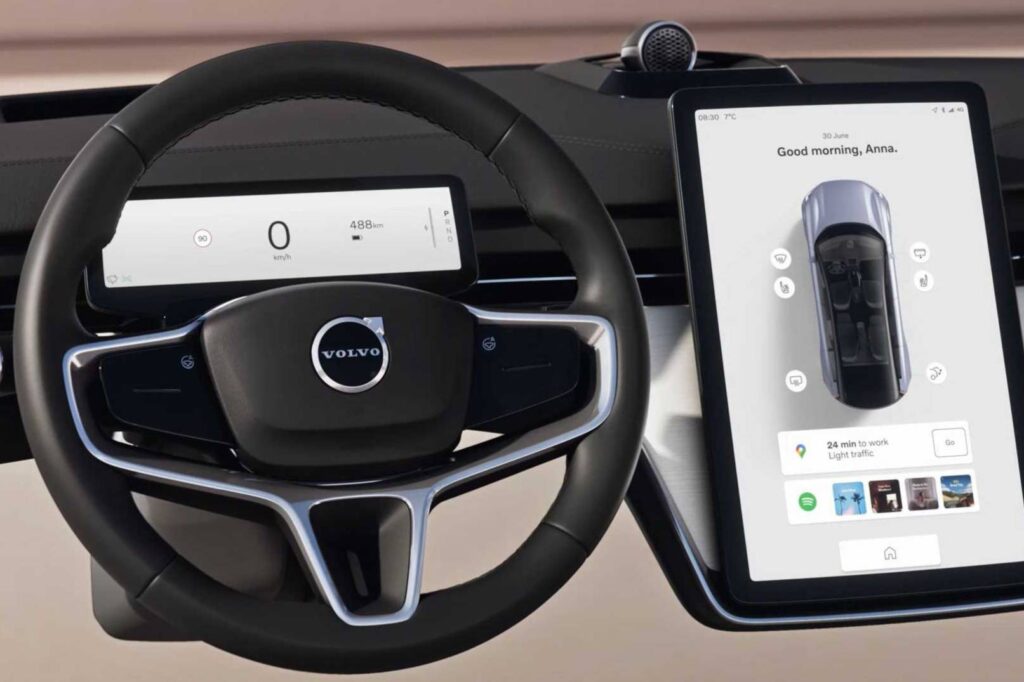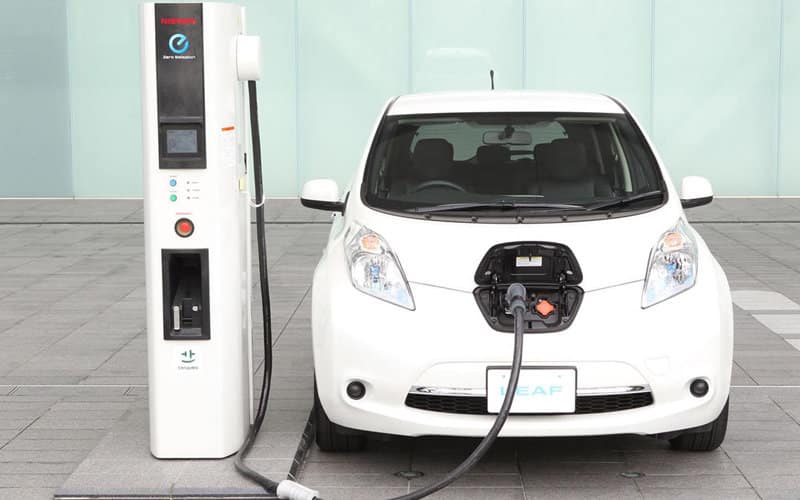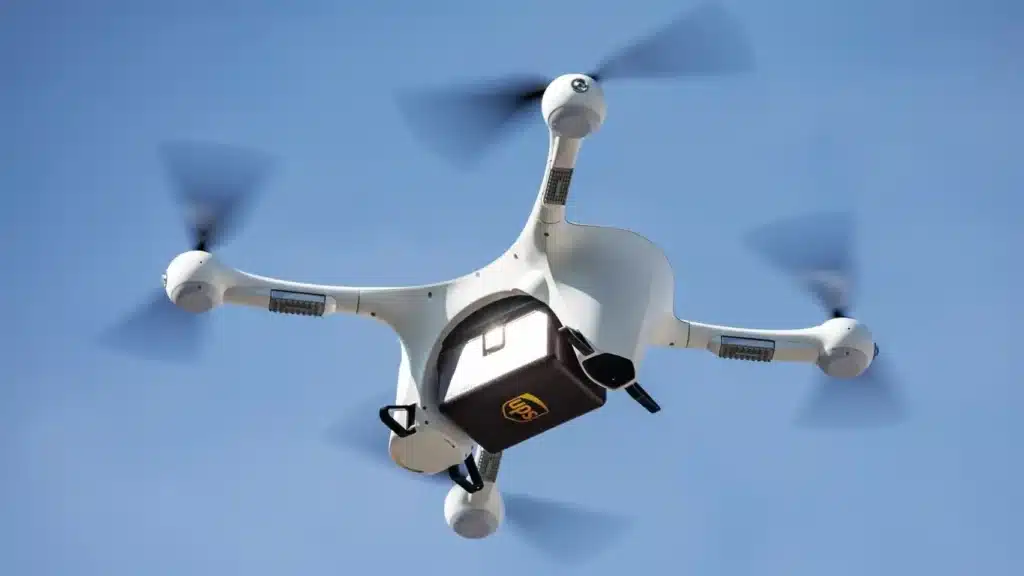In the 21st century, the convergence of advanced technologies has given rise to a momentous phenomenon: autonomous machines and devices. These independent systems are redefining the way we interact with the world, from driverless vehicles to industrial robots. In this in-depth analysis, we will explore the specialized expertise they offer, the personalized strategies they drive, and how they contribute to time and resource savings in a variety of fields.
In the intricate fabric of the technological revolution, a fascinating chapter emerges that redefines human-machine interaction: technological autonomy. This journey is not simply a breakthrough in automation, but a testament to the human capacity to innovate and challenge conventional boundaries. In this expanded introduction, we will explore how autonomous machines and devices are ushering in a new era, not only in terms of operational efficiency, but also in the way we conceive and experience technology in our daily lives.
From autonomous vehicles navigating our streets to collaborative robots sharing workspaces, technological autonomy manifests itself in a variety of forms, each with the potential to transform entire industries and societies. This comprehensive analysis will not only dive into the technical aspects of autonomy, but will also explore its impact on the human experience, unraveling the complexities of a future where operational independence is the norm.
Specialized Expertise in Autonomous Machines and Devices.
Autonomy redefines the user experience by freeing the user from routine tasks and enabling more intuitive interaction. We will examine how autonomous machines deliver a specialized experience by adapting to varying environments and performing complex tasks. From autonomous vehicles to drones, we will explore how autonomy redefines the relationship between humans and machines.
Autonomy, at its core, does not adhere to a one-size-fits-all approach. Instead, it is deployed through customized strategies that are meticulously tailored to the specific requirements of various applications. Machine learning stands as one of the foundations of these strategies, empowering machines and devices to analyze data and evolve over time. We will explore how these strategies, supported by artificial intelligence, bring to life machines that learn, adapt and evolve, transforming autonomy from a static concept to a dynamic reality.
Today’s technological revolution takes us beyond the boundaries of conventional artificial intelligence, into a realm where autonomous machines and devices not only execute tasks, but also learn, adapt and continuously improve. In this fascinating journey, we explore the specialized expertise that propels these machines to the forefront of autonomy, unraveling the breakthroughs that transform not only how we interact with technology, but also how technology interacts with the world around it.
At the heart of today’s technological revolution, we dive into the fascinating world of machines and devices that transcend traditional limitations. This journey takes us to the pinnacle of artificial intelligence and autonomy, where specialized expertise redefines our interaction with technology and marks the emergence of a new era.
Dynamic Artificial Intelligence:
Beyond Conventional ProgrammingWe begin our journey by exploring dynamic artificial intelligence, a dimension where machines do not simply follow predefined programs, but evolve and learn continuously. From genetic algorithms to reinforcement learning methods, we discover how these strategies are transforming machine autonomy and expanding the possibilities of interaction.Keywords: dynamic artificial intelligence, genetic algorithms, reinforcement learning.
Neural Networks and Deep Learning:
The Soul of Technological EvolutionThe essence of this new era lies in neural networks and deep learning, foundations that enable machines not only to process information, but to learn and adapt. We explore how these structures mimic the human ability to learn from experience, empowering machines to tackle complex tasks and adjust to changing environments.
Personalized Strategies for Autonomy
Autonomy is not a one-size-fits-all approach. Various personalized strategies drive the development of autonomous machines and devices. From machine learning algorithms to artificial intelligence-based decision making systems, we will analyze how these strategies are adapted to specific environments. In addition, we will explore cases where personalization is essential, such as in autonomous vehicle navigation in complex urban environments.
Saving Time and Resources: The Efficiency of Autonomy
Autonomy is intrinsically linked to efficiency, and we will examine how autonomous machines save time and resources in a variety of contexts. From industrial process automation to transportation and logistics optimization, we will explore case studies that highlight the positive impact on productivity and cost reduction.
Keywords in the Autonomous Universe
Autonomous Vehicles: Automobiles and public transportation vehicles that operate without human intervention.
Intelligent Robotics: Robotic systems capable of making autonomous decisions based on data and learning.
Autonomous IoT: Internet-connected devices that can operate autonomously to collect and process data.
Autonomous Drones: Unmanned aerial vehicles that can perform missions without direct human control.
Industry 4.0: The integration of autonomous technologies into industrial processes to improve efficiency and production.
Challenges in Technological Autonomy.
Despite advances, autonomy presents significant challenges. We will address concerns about safety, ethics, and adapting to unpredictable environments. The need for standards and regulations will also be discussed to ensure responsible autonomous development.
Integration of Machines and Humans in Autonomous Environments
Autonomy does not exclude human collaboration. We will discuss how autonomous machines can effectively integrate with human work, highlighting the importance of training and mutual understanding. We will examine cases where humans and machines work in harmony to maximize efficiency and productivity.
Future of Autonomy: Innovations and Emerging Trends
We will explore the innovations that will shape the future of autonomy. From the evolution of artificial intelligence to the expansion of collaborative robotics, we’ll look at emerging trends that promise to take autonomy to new heights.
Tips for Adopting Autonomous Technologies.
Needs Assessment: Clearly understand specific needs before adopting autonomous technologies.
Continuous Training: Provide ongoing training to adapt to technology updates and improvements.
Safety as a Priority: Place safety at the center of autonomous technology implementation.
Interdisciplinary Collaboration: Encourage collaboration between engineers, designers and ethicists for integrated development.
Ethical Risk Assessment: Assess and address ethical risks associated with autonomy.
In-depth Understanding of Specific Needs: Before embarking on the implementation of autonomous technologies, it is crucial to conduct a thorough assessment of specific needs. Understanding the unique challenges and requirements of each context ensures a more effective implementation aligned with strategic objectives.
Continuous Training to Adapt to Technology Updates: Autonomy is constantly evolving. Ensuring continuous training for the staff involved is essential. Keeping up to date with the latest technology updates and enhancements ensures that the team is equipped to take full advantage of constantly evolving autonomic capabilities.
Prioritizing Safety at All Stages: Safety must be a top priority. From initial design to practical implementation, every phase of autonomous development must focus on ensuring the safety of users, operators and the surrounding environment. Confidence in autonomy is built on a solid safety foundation.
Interdisciplinary Collaboration for Comprehensive Development: Autonomy flourishes in an environment where different disciplines converge. Fostering interdisciplinary collaboration between engineers, designers, ethicists and domain-specific experts enhances holistic understanding and effective implementation of autonomous technologies.
Rigorous Assessment of Associated Ethical Risks: Before implementing autonomous solutions, performing a rigorous assessment of associated ethical risks is essential. This includes considering possible biases in algorithms, social and ethical impacts, and ensuring that the autonomous technology aligns with core ethical values.
Beyond Implementation: Strategies for Maximizing Autonomous Benefits.
Continuous Monitoring and Iterative Improvement: The implementation of autonomous technologies does not stop at the point of launch. It is crucial to establish a continuous monitoring system to evaluate performance and effectiveness. Iterative improvement based on real-world data and feedback allows for constant optimization of autonomous operations.
Foster a Culture of Innovation and Adaptability: Autonomy thrives in an environment where the organizational culture fosters innovation and adaptability. Encouraging responsible experimentation and the constant search for improvement ensures that the organization is prepared to meet changing challenges and seize new opportunities.
Explore Collaborations and Strategic Alliances: Exploring collaborations and strategic alliances with other organizations can open up new possibilities. Sharing knowledge and resources with partners who share similar goals can accelerate the development and adoption of autonomous technologies.
Develop a Long-Term Technology Refresh Strategy: Technology evolves rapidly, and a long-term technology refresh strategy is essential. Planning for the integration of emerging technologies and preparing for future upgrades ensures that autonomy remains relevant and effective over time.
Efficiency Redefined: Autonomy as a Catalyst for Operational Transformation
In the fabric of operational efficiency, autonomy stands out as a disruptive element. As we move forward, we will explore how autonomy redefines efficiency in different spheres. From supply chain optimization to accelerating manufacturing processes, we will examine case studies that illustrate how autonomous machines and devices not only save time, but also redefine efficiency in terms of agility and adaptability.
Emerging Keywords in the Autonomous Universe: Exploring Technological Frontiers
The autonomous landscape is constantly evolving, and with it emerge new keywords that define technological frontiers. From collaborative robotics to ambient intelligence, we will explore terms that delineate the cutting edge of autonomy. By diving into these emerging keywords, we will unravel the technological advances that are shaping the future of autonomous machines and devices.
Challenges and Opportunities in Autonomy Technology: Navigating the Waters of Progress
Progress is not without its challenges, and in the realm of autonomy, these challenges present themselves as opportunities for growth and improvement. We will discuss how security, ethics and regulation not only pose challenges, but also open doors to more mature and responsible technological autonomy. From implementing ethical standards to building a robust regulatory framework, we will examine how the technology community can address these challenges and turn them into catalysts for more sustainable progress.
Interdisciplinary Collaboration: Merging Expertise for Integral Autonomy
Autonomy does not thrive in isolation; it requires the fusion of diverse disciplines and expertise. In this section, we will explore how interdisciplinary collaboration between engineers, designers, ethicists, and healthcare professionals is shaping a holistic approach to autonomy. From designing intuitive interfaces to implementing machine learning strategies, we will highlight how interdisciplinary collaboration is essential to unlocking the full potential of autonomous machines and devices.
Autonomous Future: New Horizons and Promising Directions
Looking to the future involves exploring the horizons ahead and the promising directions autonomy will take. From deeper integration with artificial intelligence to the convergence of autonomous technologies with augmented reality, we will unravel emerging trends that point to a future where machines not only operate autonomously, but also collaborate more closely with humans.
conclusions: The Quiet Revolution of Technological Autonomy.
Autonomous machines and devices are forging a quiet revolution that is redefining the way we interact with technology and the environment around us. From specialized expertise to personalized strategies to time and resource savings, autonomy is a driving force that not only improves operational efficiency but also raises fundamental questions about the relationship between humans and technology. With keywords outlining the autonomous landscape, this analysis seeks to shed light on a world where operational independence is the norm, not the exception. Welcome to the age of technological autonomy!
In the journey through technological autonomy, profound reflections on how autonomous machines and devices are redefining the relationship between humans and technology are revealed. Specialized expertise becomes the common thread that weaves a narrative where intuitive interface, adaptability and continuous learning converge to shape a new paradigm in digital interaction.
The personalized strategy, rooted in machine learning and artificial intelligence, demonstrates that autonomy does not follow a predetermined script, but rather constantly adapts, evolves and improves. Each autonomous application becomes a testament to how these strategies bring to life machines that learn from their environment and adjust to changing demands flawlessly.
Time and resource savings are presented as the tangible impact of autonomy in a variety of sectors. From supply chain optimization to redefining manufacturing processes, autonomy not only drives operational efficiency, but also opens the door to a new era of productivity and sustainability.
Emerging keywords reveal an ever-expanding technology horizon. Collaborative robotics, ambient intelligence and other emerging technologies point to a future where autonomy is not just limited to specific tasks, but intertwines with our daily lives in surprising ways.
Meeting the challenges of technological autonomy is not only a necessity, but also an opportunity. Safety, ethics and regulation are the foundations on which responsible and mature autonomy is built. Interdisciplinary collaboration is positioned as the engine that drives innovation and ensures that autonomy develops in an inclusive and equitable manner.
Looking ahead, emerging directions point to greater integration with artificial intelligence and technological convergence. Autonomy is not just about operating independently, but merging harmoniously with surrounding technologies to amplify its impact and reach.
Ultimately, technological autonomy is not just a breakthrough in automation; it is a testament to the human capacity to innovate and challenge pre-established boundaries. As we navigate toward this new horizon, autonomy not only transforms the way we interact with the





